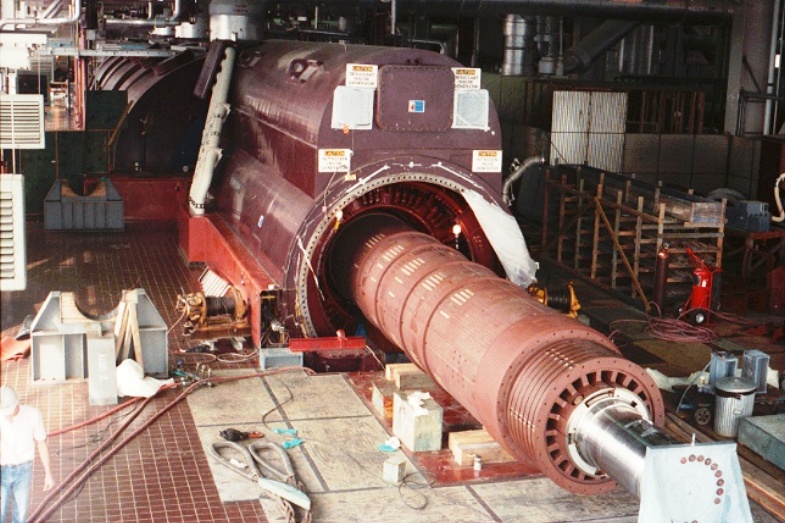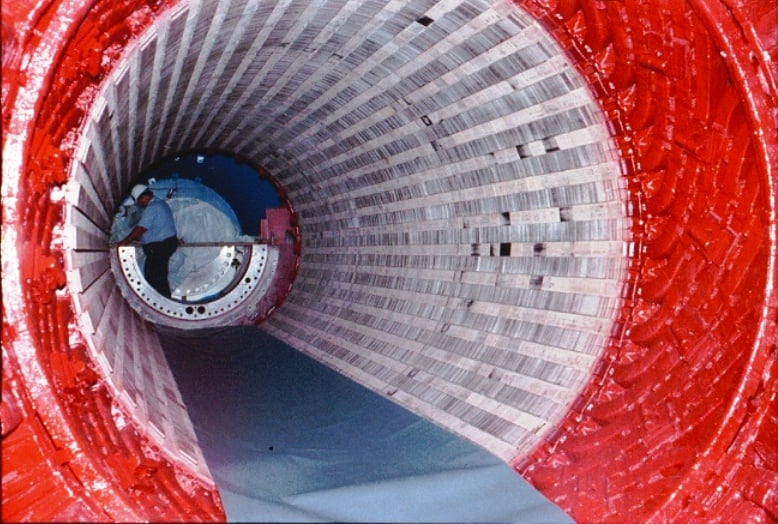At approximately 7:50am on Sunday, March 31, 2013, a 600-ton generator stator fell onto the turbine deck and then about 30 feet to the train bay floor as was being lifted out of the Unit 1 turbine building at the Arkansas Nuclear One plant. One worker was killed and four others injured when the load fell.
The fallen stator along with associated crane parts damaged electrical circuits connecting Unit 1 to the offsite electrical grid and damaged fire suppression system piping. Both of the Unit 1 emergency diesel generators started upon the loss of offsite power to supply power to essential equipment. The Unit 1 reactor was shut down for its refueling outage at the time.
The fallen components also caused the electrical breaker on the power supply to reactor coolant pump B on Unit 2 to open. This reactor coolant pump shut down in turn caused the automatic shut down of the Unit 2 reactor from full power. About 90 minutes later, water from the damaged fire suppression system piping shorted out some of the electrical circuits on Unit 2, causing one of its emergency diesel generators to start and provide power to essential equipment.
About 90 minutes after the Unit 2 electrical problem, workers declared an Unusual Event, the least serious of the NRC’s four emergency classifications, because the electrical breaker problem might have been caused by an explosion. The emergency was terminated about 7 ½ hours later.
Nuclear power plants are built to make electricity. Each reactor has its own turbine generator. Steam produced by the thermal energy produced by splitting atoms spins a turbine shaft that is connected to the generator rotor. The picture above shows an overhead view of a turbine generator unit. The outer casing of the turbine can be seen in the upper left background. The stator appears in the center of the picture with the rotor to the lower right. The rotor is spun by the turbine shaft within the stator to generate electricity.
This picture shows a close-up view of a stator with the rotor removed. Stators get replaced due to degradation and when power uprates require larger generators.
Our Takeaway
The NRC reviewed U.S. nuclear plant experience with lifting loads with cranes between 1968 and 2002. The NRC reported that about two load drops per year happened during this period with ten incidents causing deaths. The NRC’s review concluded that there had been only three very heavy load drops (defined as a load weighing more than 30 tons). ANO-1 makes four.
Gravity never takes a minute off. Neither can vigilance to safety or tragedy can occur.
“Fission Stories” is a weekly feature by Dave Lochbaum. For more information on nuclear power safety, see the nuclear safety section of UCS’s website and our interactive map, the Nuclear Power Information Tracker.


